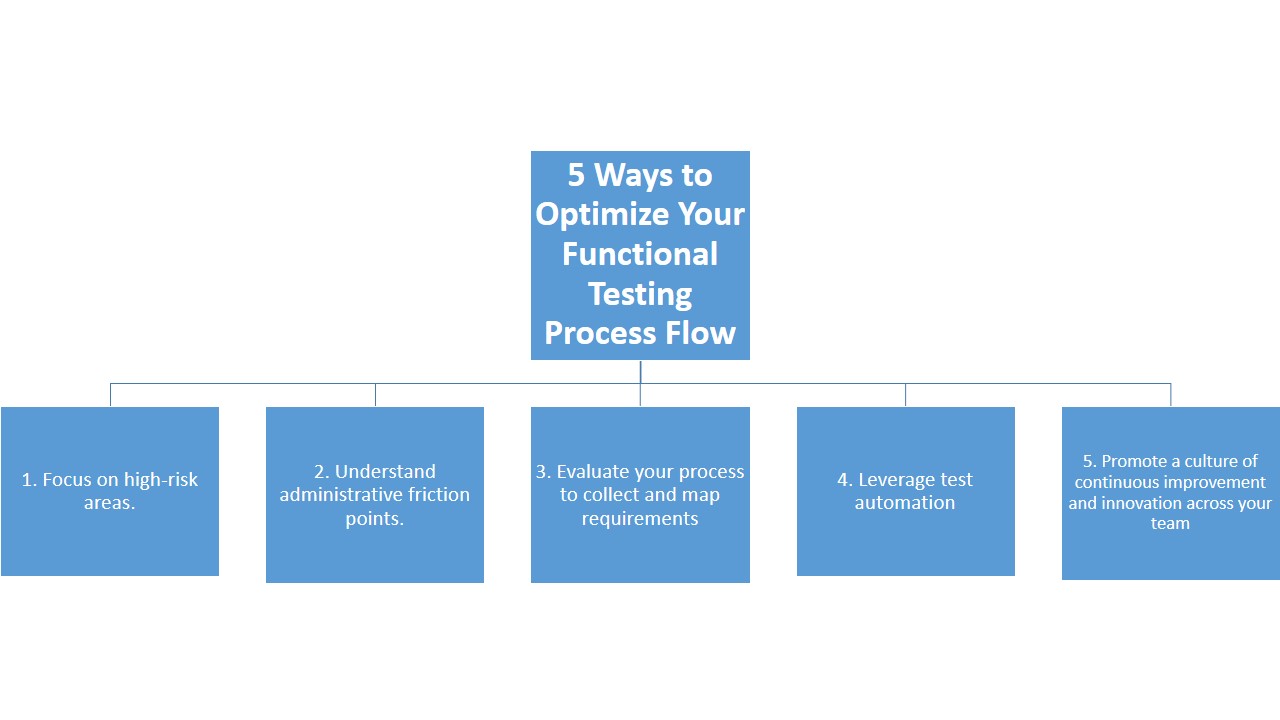How to Optimize Your Functional testing process flow
“Optimizing Your Functional Testing Process Flow” is a strategic approach aimed at refining the way software is tested for its functionalities. This methodology involves a series of meticulously designed steps that span from understanding the application’s intricacies to consistently improving the testing process over time. By implementing these optimization techniques, development teams can not only identify defects more effectively but also accelerate the delivery of feature-rich, dependable software.

Where should your team start dissecting your current testing process flow and sequencing the implementation of improvements without throwing the entire baby out with the bathwater?
5 Ways to Optimize Your Functional Testing Process Flow.
1. Focus on high-risk areas in testing process
Focusing in high-risk areas can optimize software testing by allowing resources and testing focus to be allocated where they are likely to needed the most.
By identifying areas with the highest likelihood of security, usability, and functional defects, teams can spot and address potential issues early in the development process and improve the quality of the final product.

2. Understand administrative friction points in testing process
In addition to focusing on high-risk areas, understanding administrative friction points and simplifying and automating these tasks is a quick way to optimize software testing flows.
And it’s points are the administrative and coordination tasks that take up valuable time and resources such as.
- Reporting.
- Defect tracking.
- Test-run scheduling.
- Data management.
By identifying and automating these tasks with a test management tool, you can simplify the testing process and reduce the time and resources needed to complete them, freeing up more time and resources to focus on actual testing tasks.

3. Evaluate your process to collect and map requirements
Software development, testing, and user acceptance are ultimately driven by how well initial requirements are collected and woven throughout the project lifecycle. Reviewing this process and the tools used to enable it can not only make it easier for your team to collect and map requirements but also improve the quality of test cases. Together, these steps can reduce the risk of costly rework, missed design requirements, and customer dissatisfaction, ultimately saving time and resources in the long run.
4. Leverage test automation
Using test automation for simple, repetitive tasks and manual testing for more complex scenarios is another effective way to optimize software testing. Test automation is ideal for repetitive tests that require a high degree of accuracy and consistency such as regression testing, performance testing, and load testing. Automating these tasks can save time and resources, reduce errors, and allow testers to focus on more complex scenarios.
On the other hand, tests that require subjective evaluation to uncover unexpected issues and edge cases can be left for manual testing. By combining both manual and automated testing, teams can achieve a more comprehensive and effective testing process that covers all the necessary scenarios while optimizing time and resources.
5. Promote a culture of continuous improvement and innovation across your team
Encouraging team members to seek out new approaches, tools, and technique sand to share them with their team fosters collaboration and introduces new testing insights and strategies. By continuously striving to improve and innovate, your team can stay up-to-date with the latest testing trends and best practices, ultimately resulting in a higher-quality final product. At the same time, this environment builds a culture of learning and growth, which can lead to higher team engagement and retention.


